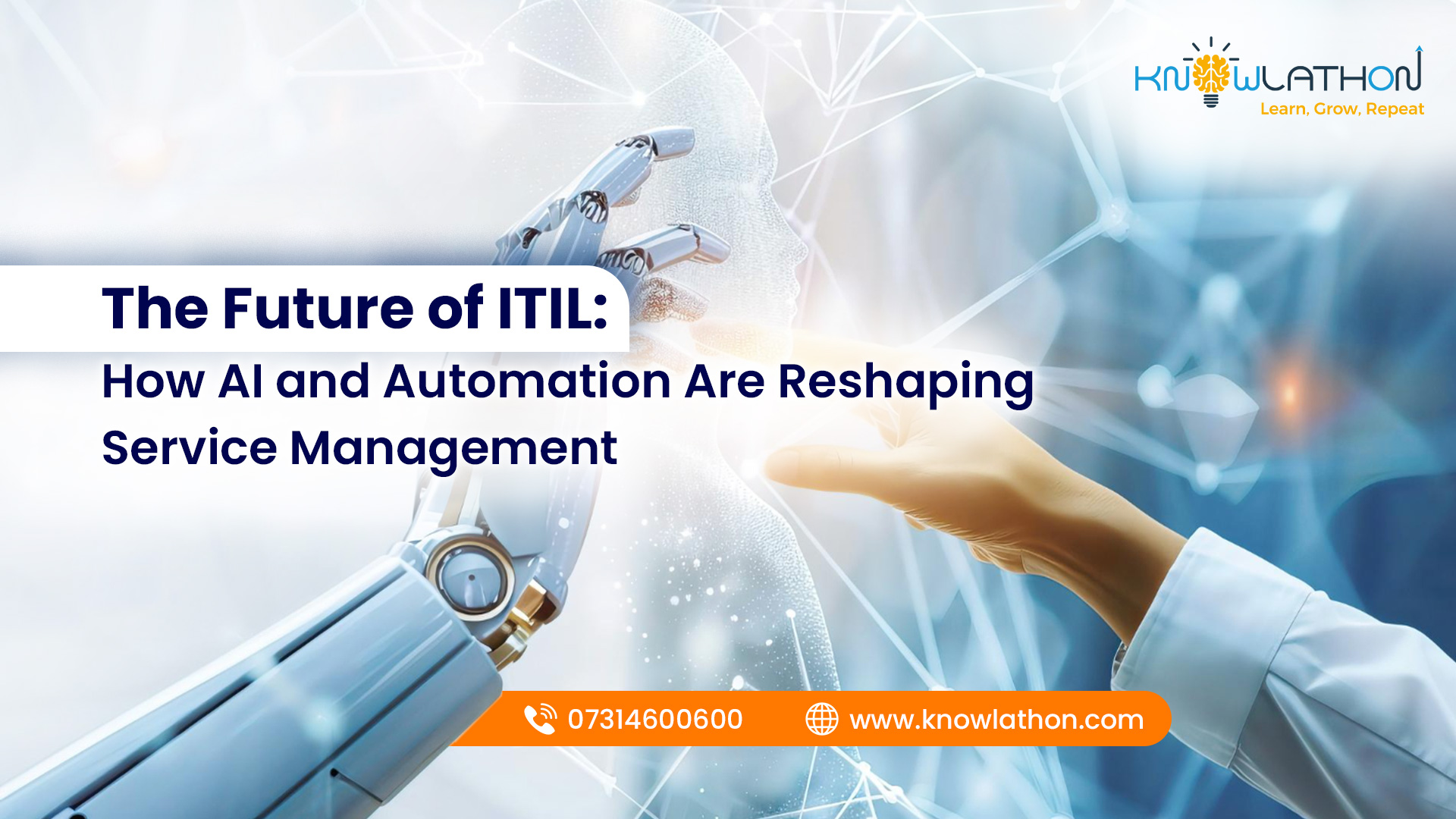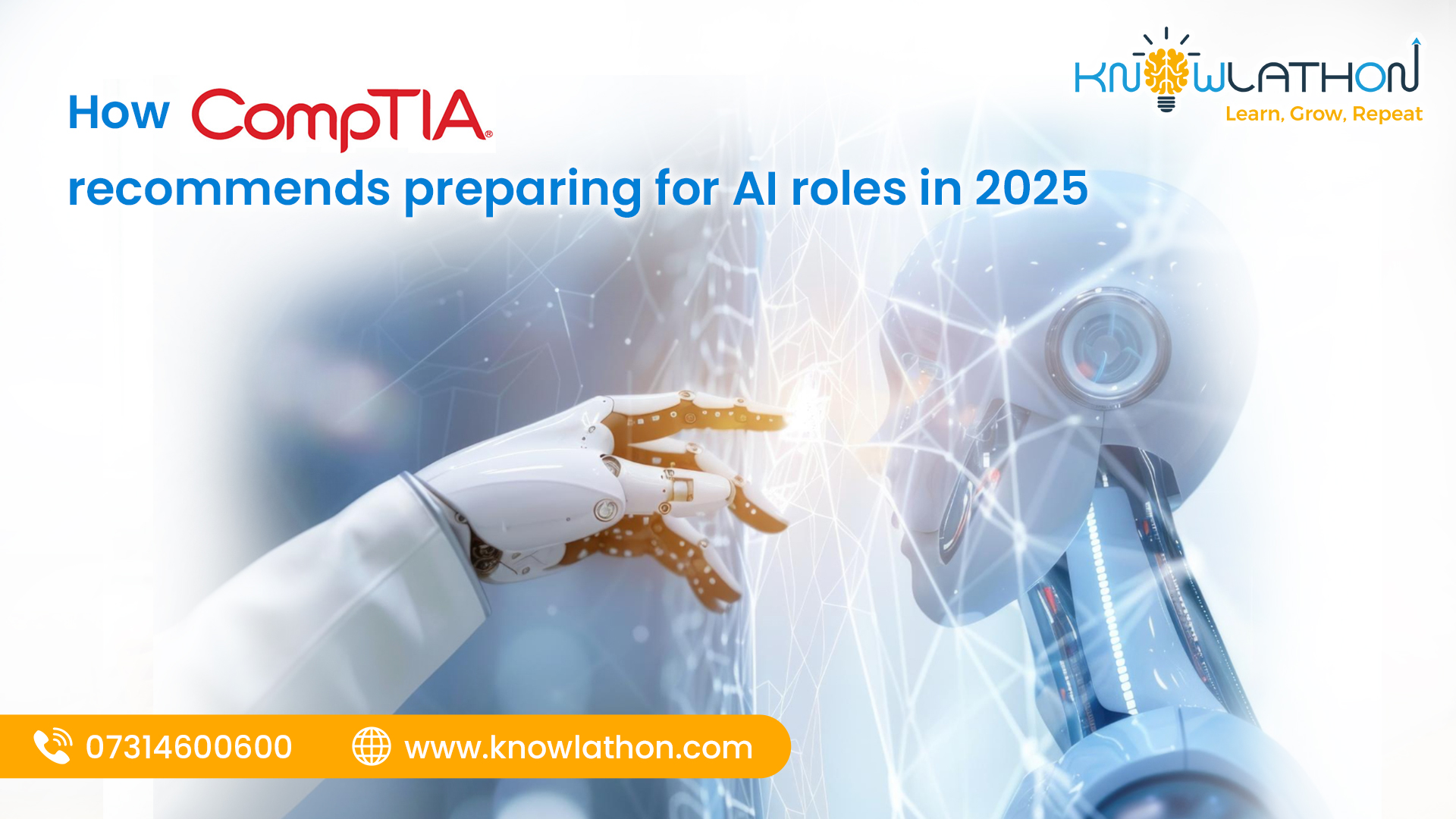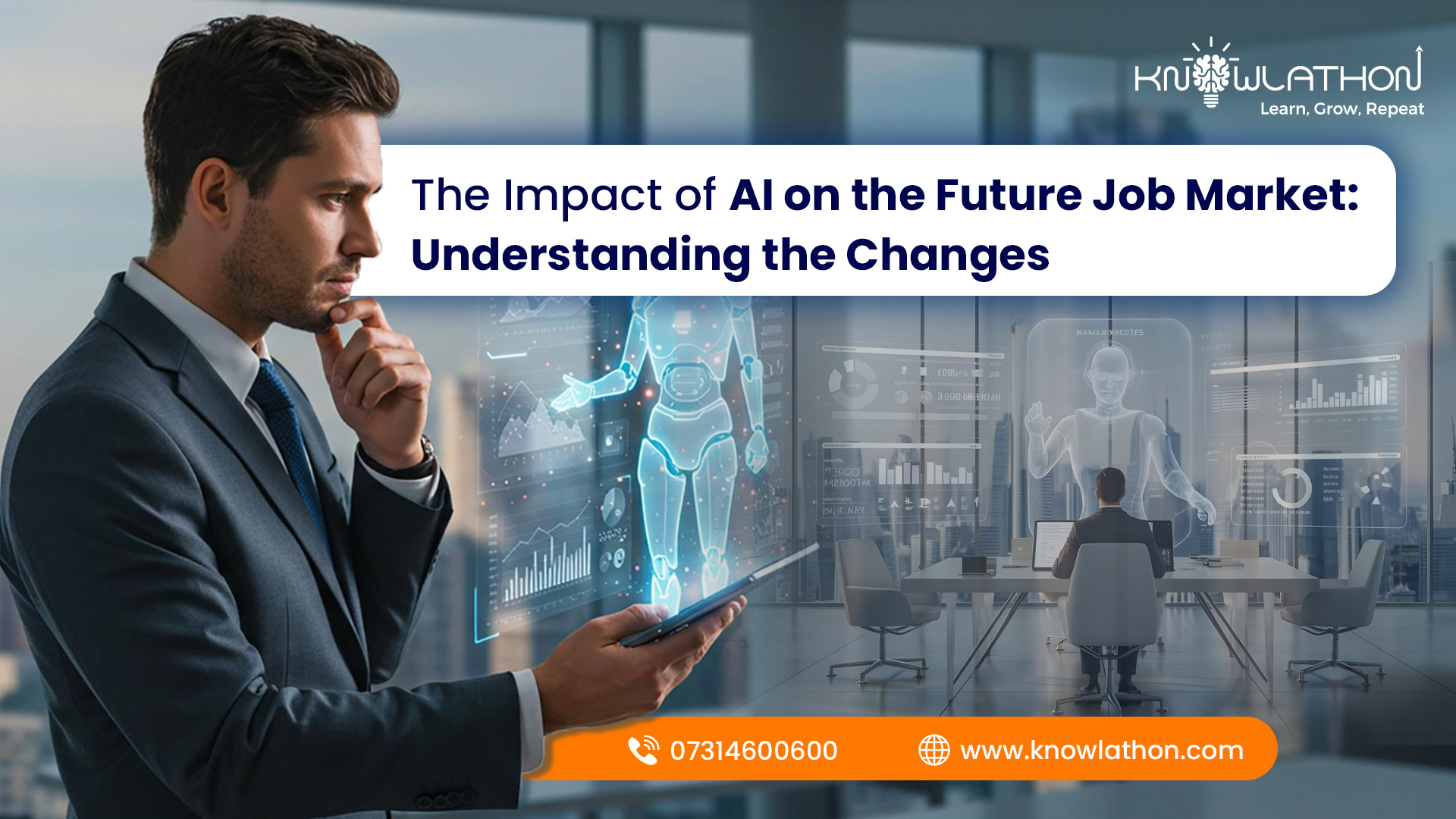The Future of ITIL: How AI and Automation Are Reshaping Service Management

The Information Technology Infrastructure Library (ITIL) has been a cornerstone of IT service management (ITSM) for decades, providing a structured framework to deliver efficient, reliable, and customer-centric IT services. With the release of ITIL 4, the framework has evolved to embrace modern practices like agility, DevOps, and digital transformation, ensuring its relevance in a rapidly changing technological landscape.
In the ever-evolving world of IT service management (ITSM), ITIL has long been the gold standard for aligning IT services with business needs. Launched in its current form as ITIL 4 in 2019, this framework emphasizes value creation through practices like service value system (SVS) and guiding principles such as "optimize and automate." But as we step into 2025, the future of ITIL is being redefined by artificial intelligence (AI) and automation. These technologies are not just add-ons; they're catalysts for digital transformation in ITIL, turning reactive service desks into proactive, intelligent hubs. From AI in IT service management to ITIL automation, let's explore how these innovations are driving ITSM trends and reshaping the landscape.
The Evolution of ITIL: From Framework to Digital Enabler
ITIL has long been synonymous with best practices for ITSM, offering guidelines for processes like incident management, problem management, change enablement, and service desk operations. ITIL 4, launched in 2019, introduced a more holistic and flexible approach, emphasizing value co-creation, collaboration, and adaptability to digital ecosystems. Its focus on the Service Value System (SVS) and guiding principles ensures that ITIL remains relevant in an era of cloud computing, agile methodologies, and customer-centric service delivery.
However, the future of ITIL lies in its ability to integrate emerging technologies like AI and automation. These tools are not just add-ons but are fundamentally reshaping how ITIL processes are executed, enabling organizations to achieve greater efficiency, scalability, and innovation. By leveraging AI in IT service management and ITIL automation, businesses can streamline operations, reduce costs, and deliver seamless user experiences, positioning ITIL as a critical enabler of digital transformation in ITIL.
AI in IT Service Management
Artificial intelligence is transforming IT service management by introducing capabilities that were previously unimaginable. From predictive analytics to natural language processing (NLP), ITIL and machine learning are unlocking new possibilities for service desks, incident management, and decision-making. Here’s how AI is reshaping the future of ITIL:
1. Intelligent Service Desk: Redefining User Support
The traditional service desk is evolving into an intelligent service desk powered by AI. Chatbots and virtual agents, driven by NLP and machine learning, can handle routine user queries, troubleshoot issues, and provide self-service options 24/7. These AI-driven tools analyze historical data and user interactions to offer personalized responses, reducing the workload on human agents.
For example, an AI-powered service desk can automatically categorize and prioritize tickets based on urgency and impact, ensuring faster resolution times. By integrating with ITIL 4 processes like incident and request management, these systems align with best practices while enhancing efficiency. The result is a seamless user experience and a significant reduction in mean time to resolution (MTTR).
2. Predictive Analytics for Proactive Problem Management
AI and machine learning enable predictive analytics, allowing organizations to anticipate and prevent issues before they impact users. By analyzing patterns in historical data, AI can identify potential system failures, capacity bottlenecks, or recurring incidents. This aligns with ITIL 4’s problem management practice, which emphasizes root cause analysis and proactive resolution.
For instance, machine learning models can detect anomalies in server performance and trigger automated alerts or remediation actions, reducing downtime and improving service reliability. This shift from reactive to proactive problem management is a hallmark of service management innovation.
3. Enhanced Decision-Making with AI Insights
AI-driven analytics provide IT teams with actionable insights to optimize service delivery. By processing vast amounts of data from ITIL processes, AI can identify trends, recommend process improvements, and predict future demand. This empowers organizations to align IT services with business objectives, a core principle of ITIL 4’s value-driven approach.
For example, AI can analyze service request patterns to optimize resource allocation or suggest improvements to change enablement processes, ensuring faster and safer deployments. These insights drive digital transformation in ITIL by enabling data-driven decision-making.
ITIL Automation: Streamlining Processes for Efficiency
Automation is another critical driver of the future of ITIL, enabling organizations to execute ITIL processes with speed, accuracy, and consistency. By automating repetitive tasks and workflows, businesses can reduce human error, lower operational costs, and free up IT teams to focus on strategic initiatives. Here’s how ITIL automation is transforming key ITSM processes:
1. Automated Incident Management
Incident management is one of the most time-sensitive ITIL practices, and automation is revolutionizing how incidents are detected, logged, and resolved. Automated systems can monitor IT infrastructure in real-time, detect issues, and create incident tickets without human intervention. For example, if a server goes offline, an automated workflow can notify the relevant team, initiate diagnostic scripts, and even apply predefined fixes.
This aligns with ITIL 4’s focus on continual improvement, as automation reduces resolution times and minimizes service disruptions. Additionally, AI-powered automation can escalate complex incidents to human agents with detailed context, improving collaboration and efficiency.
2. Streamlined Change Enablement
Change management (now called change enablement in ITIL 4) is critical for balancing innovation with stability. Automation simplifies the change approval process by using predefined rules and AI-driven risk assessments. For low-risk changes, such as routine software updates, automation can execute the change without manual approval, accelerating delivery while maintaining governance.
For high-risk changes, AI can analyze historical change data to predict potential impacts, ensuring informed decision-making. This combination of automation and AI enhances the agility of ITIL 4 practices, supporting digital transformation in ITIL.
3. Self-Healing Systems
Automation is enabling the rise of self-healing IT systems, which can detect and resolve issues without human intervention. For example, if a cloud-based application experiences performance degradation, an automated system can scale resources, restart services, or apply patches based on predefined ITIL workflows. This reduces downtime and aligns with ITIL 4’s focus on delivering value to customers.
Self-healing systems are particularly valuable in complex, hybrid IT environments, where manual intervention is often impractical. By integrating automation with ITIL and machine learning, organizations can achieve unprecedented levels of resilience and efficiency.
ITSM Trends Shaping the Future of ITIL
The integration of AI and automation into ITIL is part of broader ITSM trends that are shaping the future of service management. Here are some key trends to watch:
Hyper-automation, the combination of AI, machine learning, and robotic process automation (RPA), is taking ITIL automation to the next level. By automating end-to-end ITIL processes, hyper-automation eliminates silos, reduces costs, and accelerates service delivery. For example, hyper-automation can orchestrate workflows across incident, problem, and change management, ensuring seamless integration and faster outcomes.
AIOps platforms combine AI, machine learning, and big data analytics to enhance IT operations. These platforms integrate with ITIL 4 processes to provide real-time insights, automate routine tasks, and predict potential issues. AIOps is particularly valuable for managing complex, cloud-native environments, where traditional ITIL processes may struggle to keep pace.
The future of ITIL is increasingly focused on employee and customer experience. AI-powered tools like intelligent service desks and chatbots enhance user satisfaction by providing instant support and personalized interactions. ITIL 4’s emphasis on value co-creation aligns with this trend, ensuring that IT services deliver tangible benefits to end-users.
ITIL 4 was designed to integrate with modern methodologies like DevOps and Agile, and AI and automation are accelerating this convergence. Automated CI/CD pipelines, powered by AI-driven testing and monitoring, enable faster and safer software deployments, aligning with ITIL’s change enablement and continual improvement practices.
The Road Ahead: ITIL as a Catalyst for Innovation
The future of ITIL is bright, with AI and automation acting as catalysts for service management innovation. By embracing AI in IT service management and ITIL automation, organizations can achieve unprecedented levels of efficiency, agility, and customer satisfaction. ITIL 4 provides the flexibility and vision needed to integrate these technologies, ensuring that ITIL remains a cornerstone of ITSM in the digital age.
As businesses continue their digital transformation in ITIL, the focus will shift toward proactive, predictive, and user-centric service management. The intelligent service desk, powered by ITIL and machine learning, will become the norm, while automation will streamline processes and enable self-healing systems. By staying ahead of ITSM trends and leveraging the power of AI and automation, organizations can unlock the full potential of ITIL, delivering value in an increasingly complex and dynamic IT landscape.
Conclusion
The convergence of ITIL 4, AI, and automation is reshaping the future of IT service management. From intelligent service desks to predictive analytics and self-healing systems, these technologies are driving service management innovation and enabling organizations to thrive in the digital era. By embracing AI in IT service management and ITIL automation, businesses can streamline operations, enhance user experiences, and align IT services with strategic goals. As we move forward, ITIL 4 will continue to evolve, ensuring that it remains a vital framework for navigating the complexities of modern ITSM.





